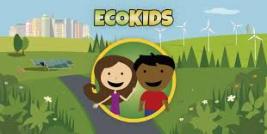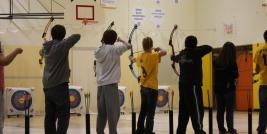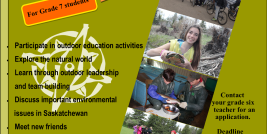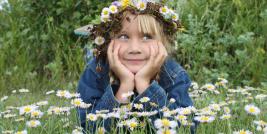The Owls classroom presentation provides information on this unique predator, ranging from its exceptional senses to its tools for hunting. A short video is shown, and students will have an opportunity to view mounts of owls including the Great-horned owl, Short-eared owl, Burrowing owl, Great grey owl and Snowy owl.
The presentation is approximately 60 minutes in length, please provide 2 large tables to display the owl specimens. The following topics are discussed:
Content:
- view mounts of owls including Great-horned owl, Short-eared owl, Burrowing owl, Great grey owl and Snowy owl
- topics discussed:
- senses (binocular vision, location of ears, function of facial disk),
- hunting adaptations (silent feathers, beak shape and function, talons)
- behaviour (habitats, territories, nesting behaviour, migration)
- food (types of prey, formation of owl pellets)
- environmental issues (habitat loss, crop spraying, conservation)
Length of presentation:
- one (1) hour
Set up:
- two (2) large tables to display owl specimens, laptop and data projector
Related Documents:
Online Resources:
| The Owl Pages |
"Facts about Owls" Blooket Game Link
"Owls in Numbers" Blooket Game Link
Blooket is a review game similar to Kahoot. Sign up a FREE account at blooket.com to host a game. Use the link provided HERE, choose HOST, then a Game Mode (start with CLASSIC for the first round). A game code will be generated for players to join. You will now be able to Host the game on a big screen and have the students join in on their devices (blooket.com/play) with the Game ID.
Curriculum Connections |
|
Outcomes |
Indicators |
Grade 1 |
Science |
LT1.1 Differentiate between living things according to observable characteristics, including appearance and behaviour. |
h,i,j,l |
|
|
Science |
LT1.2 Analyze different ways in which plants, animals, and humans interact with various natural and constructed environments to meet their basic needs. |
a,c,e,f,g,h,i,j |
|
|
Science |
DS1.2 Inquire into the ways in which plants, animals, and humans adapt to daily and seasonal changes by changing their appearance, behaviour, and/or location. |
a,c,d,f |
Grade 2 |
Science |
AN2.1 Analyze the growth and development of familiar animals, including birds, fish, insects, reptiles, amphibians, and mammals, during their life cycles. |
b,c,e,f,g |
|
|
Science |
AN2.3 Assess the interdependence of humans and animals in natural and constructed environments. |
a,d,e,f,g |
Grade 4 |
Science |
HC4.1 Investigate the interdependence of plants and animals, including humans, within habitats and communities. |
a,c,f |
|
|
Science |
HC4.2 Analyze the structures and behaviours of plants and animals that enable them to exist in various habitats. |
b,c,g |
|
|
Science |
HC4.3 Assess the effects of natural and human activities on habitats and communities, and propose actions to maintain or restore habitats. |
c,d,e,j |
Grade 6 |
Science |
DL6.1 Recognize, describe, and appreciate the diversity of living things in local and other ecosystems, and explore related careers |
b,d |
|
|
Science |
DL6.3 Analyze the characteristics and behaviours of vertebrates (i.e., mammals, birds, reptiles, amphibians, and fish) and invertebrates. |
b,e |
|
|
Science |
DL6.4 Examine and describe structures and behaviours that help:
|
c,d,f.g.h,i |
Grade 7 |
Science |
IE7.2 Observe, illustrate, and analyze living organisms within local ecosystems as part of interconnected food webs, populations, and communities. |
i,j,l |





